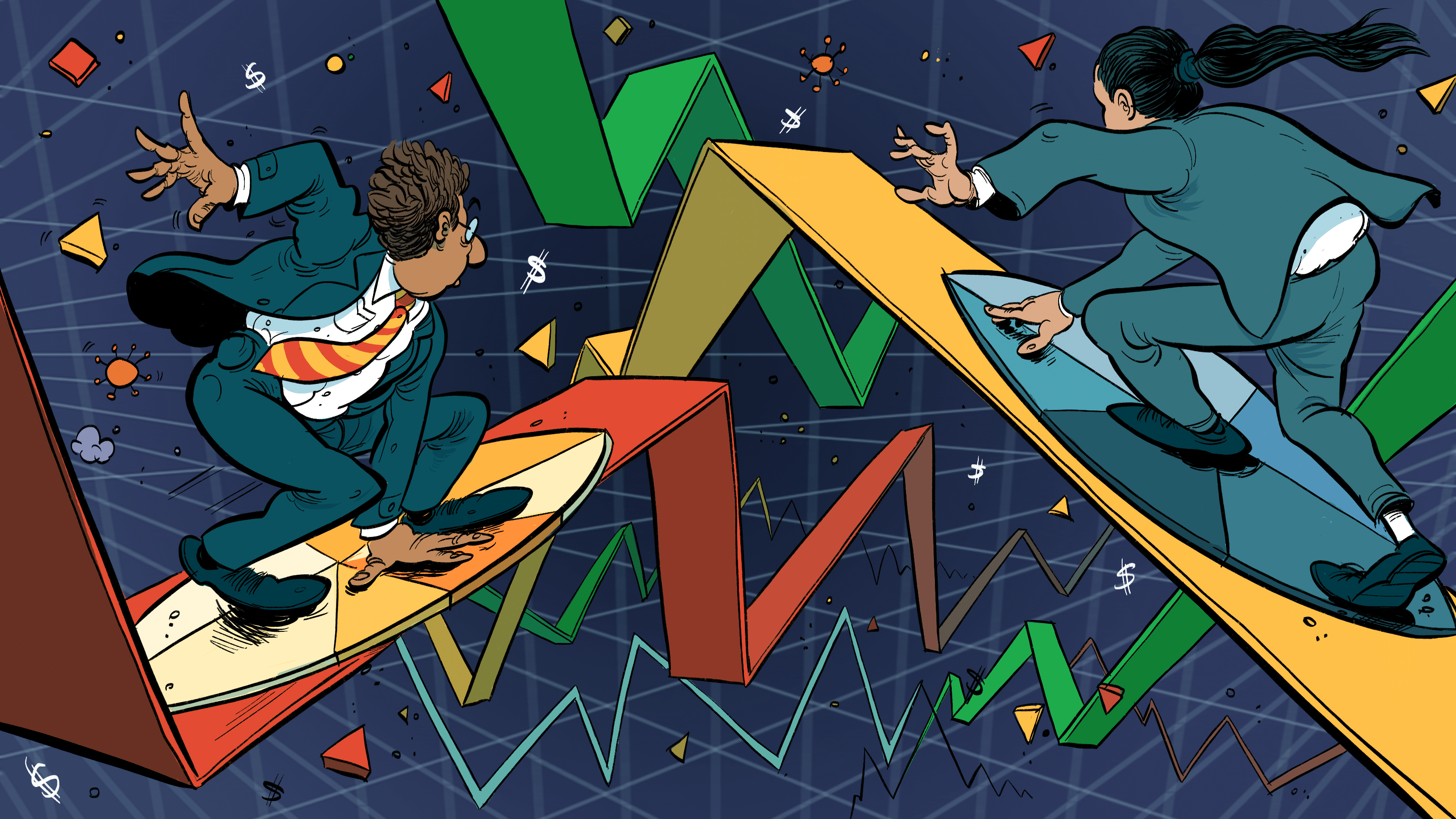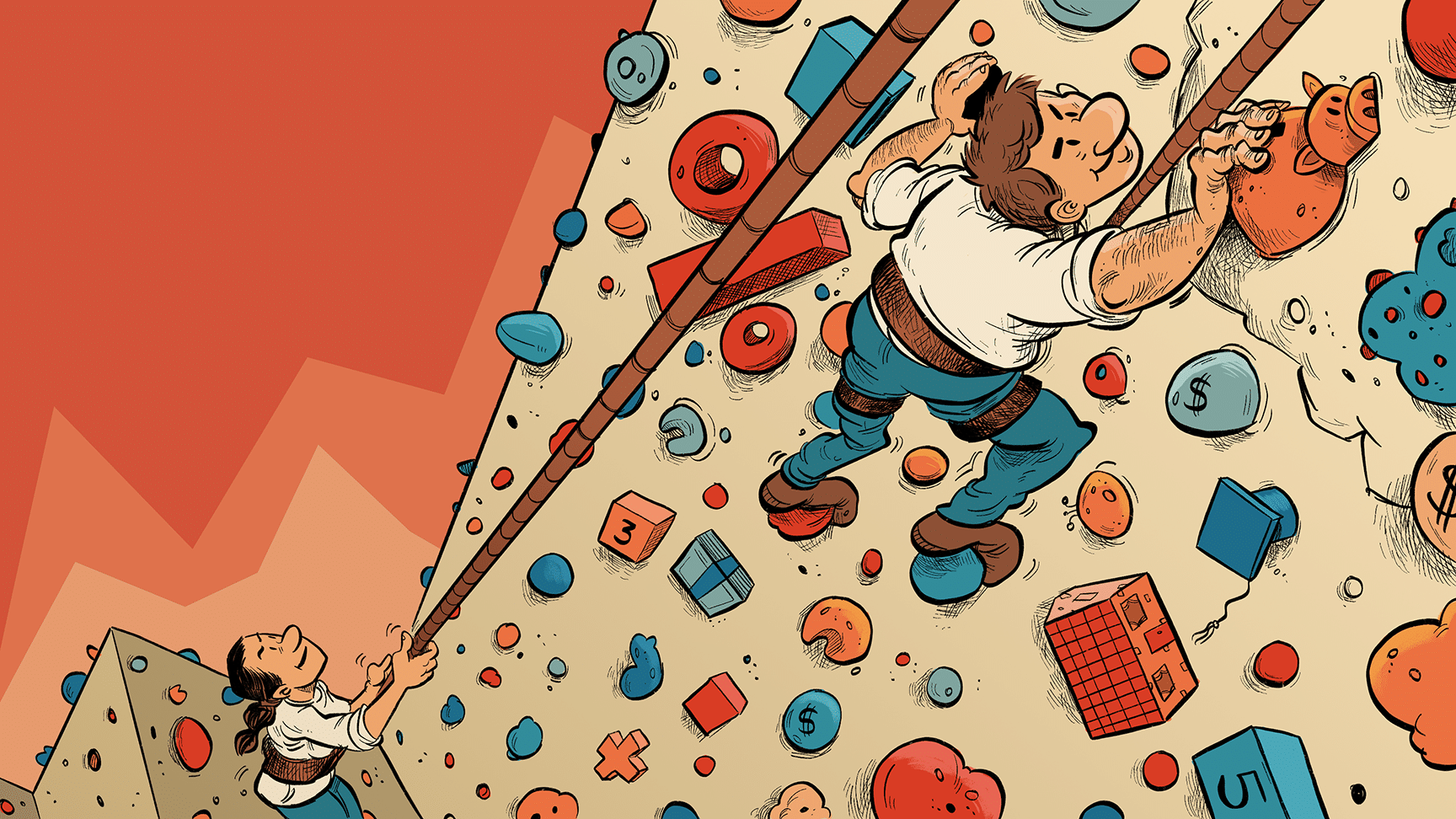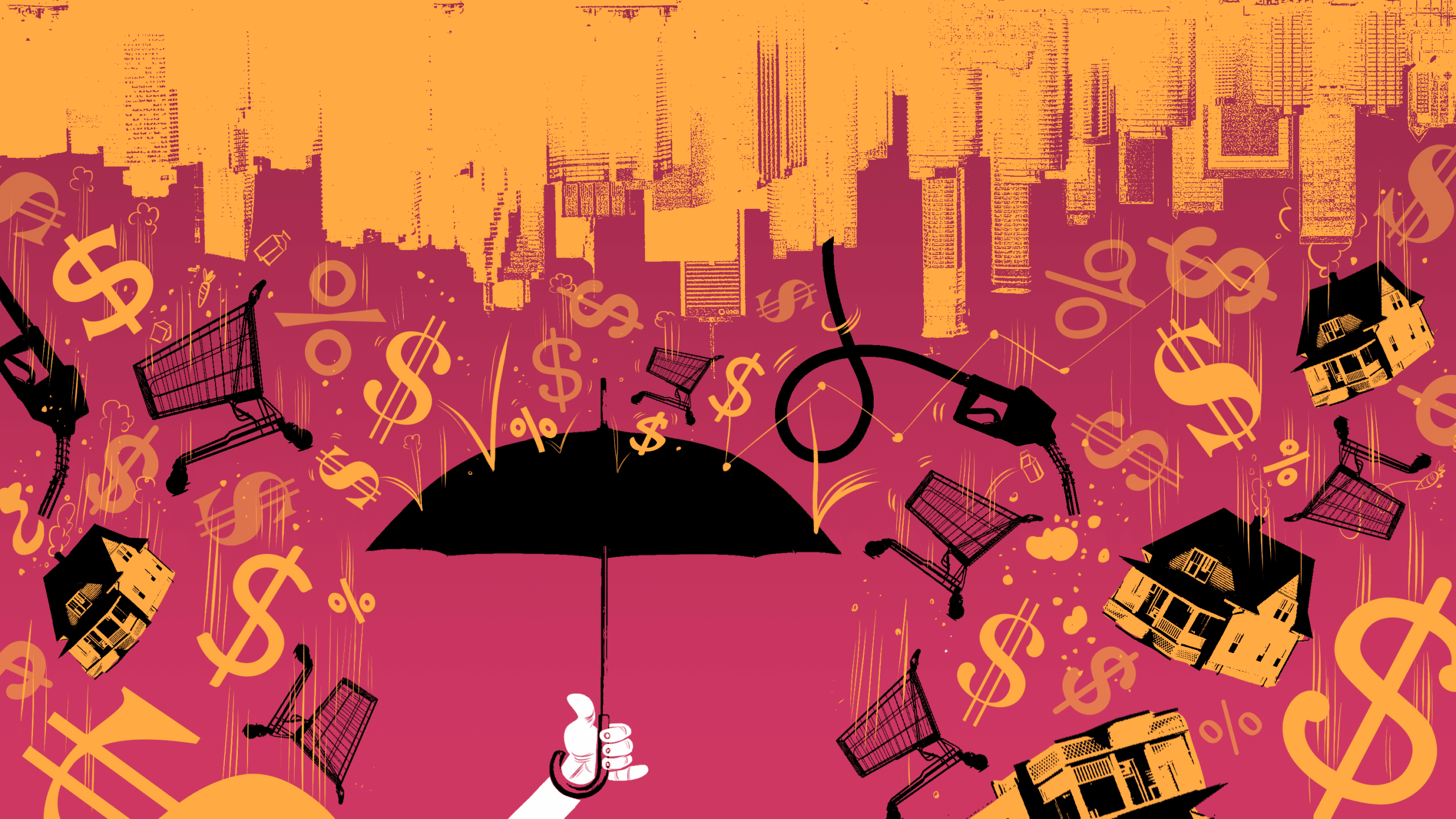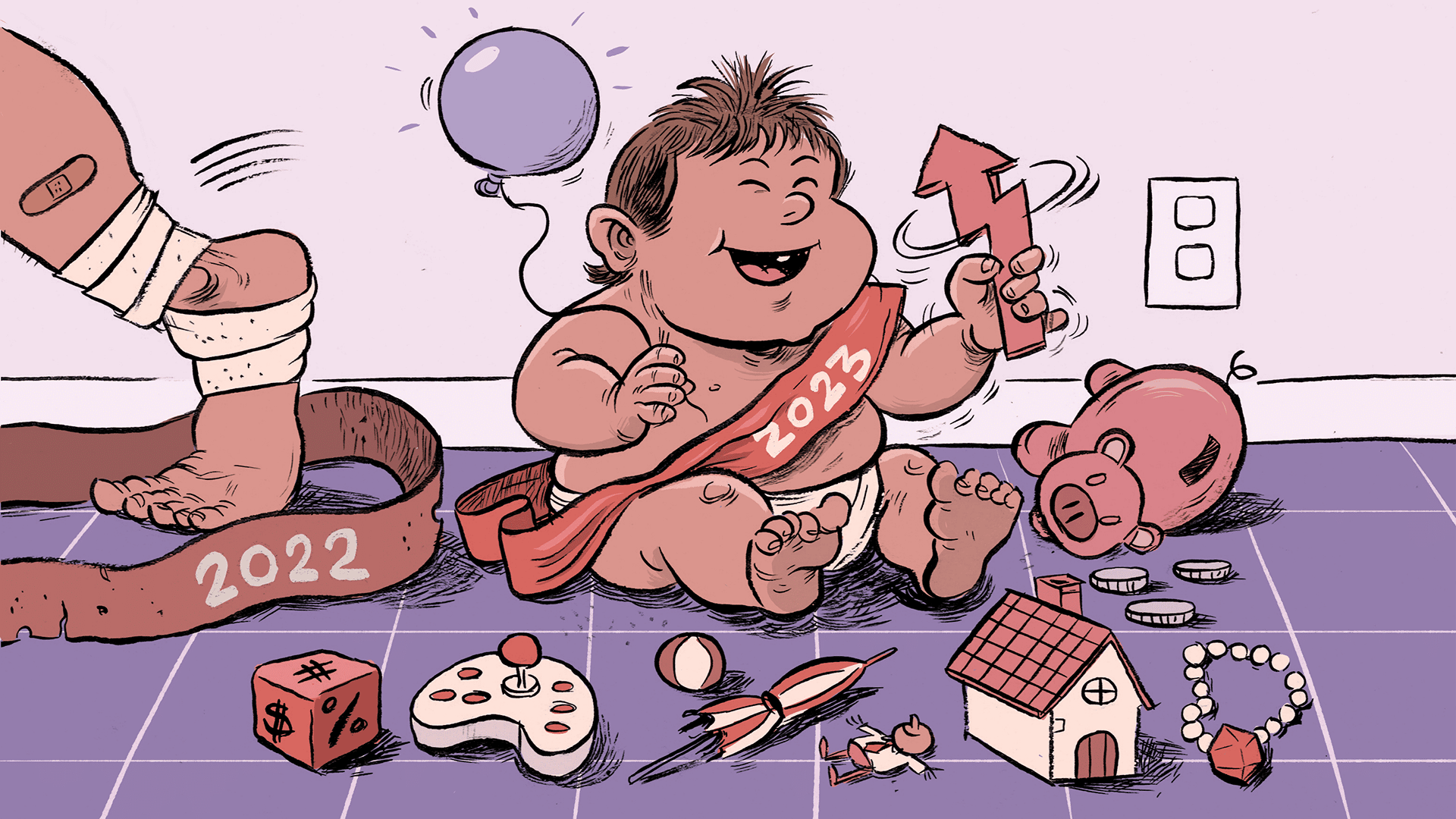
The year ahead: Potential opportunities and risks amid market uncertainty
Whether it’s the ongoing COVID-19 pandemic, record-high inflation, or growing geopolitical fears, there are many forces at play that can influence markets these days. Here are some of the potential opportunities and risks TD Wealth investment professionals are watching out for in 2022.
It is often said that the one thing markets hate most is uncertainty. For many investors, it may feel like the last few months have offered nothing but. While that trend is likely to continue into the year ahead, it doesn’t mean there aren’t opportunities to be found, as well as potential risks.
In January, TD Wealth held an event that brought together some of the top economic and market thought leaders at TD to discuss the current state of our economic recovery, the outlook for markets, and possible implications for your portfolio.
You can watch a replay of the event here. Meanwhile, we’ve highlighted below some key themes that stood out.
OPPORTUNTIES
It may not feel like it, but the economy is rebounding
“From an economic perspective, we have seen quite a bit of resilience,” said Beata Caranci, Chief Economist for TD Bank. “Every [COVID-19] wave seems to have less economic impact. They are not as extended or deep.” She also pointed out that Canada has more people employed today than it did pre-pandemic and more people in full-time roles. “People who have found employment have found higher-paying roles.”
However, Caranci acknowledged that the employment recovery has not helped all Canadians, and that the uneven trend is likely to continue in 2022. As the January jobs report demonstrated, with a loss of more than 200,000 jobs (mainly due to public health measures put in place to tackle the spread of the Omicron variant), nothing is certain.
Corporate earnings are getting stronger, and dividends are on the rise
“One of the big picture themes you are seeing is that corporations in the U.S. and Canada are incredibly healthy,” said David Sykes, Head of Public Equities at TD Asset Management.
“They have really been able to refinance debt at much lower levels. The business models are strong,” he said, adding that if you look at earnings, they were incredibly robust last year and will likely grow in 2022: “This year, we are expecting earnings to grow something in the 8% to 10% range.”
Sykes also said that investors could benefit as more companies resume dividend hikes and stock buybacks after looking to conserve cash during the earlier stages of the pandemic.
Canadian stocks have lagged, but that may soon change
“We’ve upgraded [our weighting for Canadian equities] for a couple of reasons,” said Michael Craig, Head of Asset Allocation and Derivatives at TD Asset Management. “With interest rates rising, that goes to the margins with banks as they’re able to earn a lot more on revenue off their reserve. That’s a huge tailwind for Canadian banks,” he added. Craig also said the Canadian energy sector may offer opportunities as oil prices continue their upward trajectory: “On the energy side, we are talking about oil hitting US$100 [a barrel] this year, and that’s becoming more of a consensus of opinion.”
RISKS
High inflation remains a problem and the outlook is unknown
“A year ago, we were talking about no hikes until 2024,” said Craig. “Today, we are looking at four or five [hikes] in 2022. Economists have had a hard time predicting inflation. The whole world has had a hard time because we’ve never seen anything like this before, a massive surge in consumption, coupled with challenges with shipping.”
That sentiment was shared by Caranci, who added that many economists have also underestimated inflation. “How far are they behind the curve is yet to be revealed,” she said. “We have four hikes embedded in our forecast for the Bank of Canada and the Federal Reserve. It’s a question of whether we have to go more and/or faster [when hiking rates] and that could destabilize confidence. That is a risk factor going forward.”
When it comes to market volatility, expect a bumpy year
“The fundamentals at the end of the day drive the market,” said Sykes. “We are in a global pandemic. We’re not sure if there’s going to be a new variant. And how will central banks respond?”
An accurate forecast may lead to a smoother ride, said Sykes, but he added that central banks seem to be behind the curve, which could result in a need to raise interest rates a little faster or a little more than anticipated. “Can they thread the needle so that you raise interest rates just enough but not too much? That is a real concern and that’s what the equity market is watching every day,” he said.
Beware the unknown variables
“Inflation volatility continues to be a wild card,” Craig cautioned, “but the things that I think are a bit more disconcerting, [are] the geopolitical aspects of what’s happening in Eastern Europe in terms of the brinkmanship between Russia and NATO and the West. That doesn’t seem to be cooling off. That’s a real risk in the market and one that has been fairly underpriced, particularly in European assets and the euro.”
Craig also pointed out that while higher oil prices might be good for the energy sector, companies that have exposure to energy prices might be negatively impacted.
“If you own energy stocks and it goes through US$100 [per barrel] it’s great, but it is a headwind to growth,” he said. “Higher energy prices can serve almost as a tax on growth. Companies that use a lot of energy will be hurt by that. That is something that is not fully appreciated in the market. In terms of energy, if it hits US$100 that might be one thing, but if it moves to US$120 or US$130, that might be destabilizing to the market.”
Is your portfolio prepared?
Destabilizing factors can wreak havoc on a portfolio. One way you can help protect yourself is by building an investment strategy that isn’t reactionary or based on market swings, said Brad Simpson, Chief Wealth Strategist for TD Wealth, who works with advisors and clients on portfolio management.
“There is a difference between investment and speculation,” said Simpson, adding that when you look at the year ahead you may not know what’s going to happen, but you can still have a process for how you make decisions.
“Having a philosophy makes a ton of sense,” he said. “Here at TD Wealth, we follow something called risk priority management. And that defines a consistent way of thinking.”
When you decide what your goals and objectives are and invest up against those, “that takes a lot of the noise away.”
It’s critical, he says, to be clear on what your immediate, mid-term and long-term goals are and to build a portfolio based on those goals.
“Then suddenly, your measuring stick changes,” he said. “The longer your time horizon is, the much better the return is meant to be and much more positive it’s [likely] going to be.”
DERRICK MCELHERON
MONEYTALK LIFE
ILLUSTRATION
DANESH MOHIUDDIN












